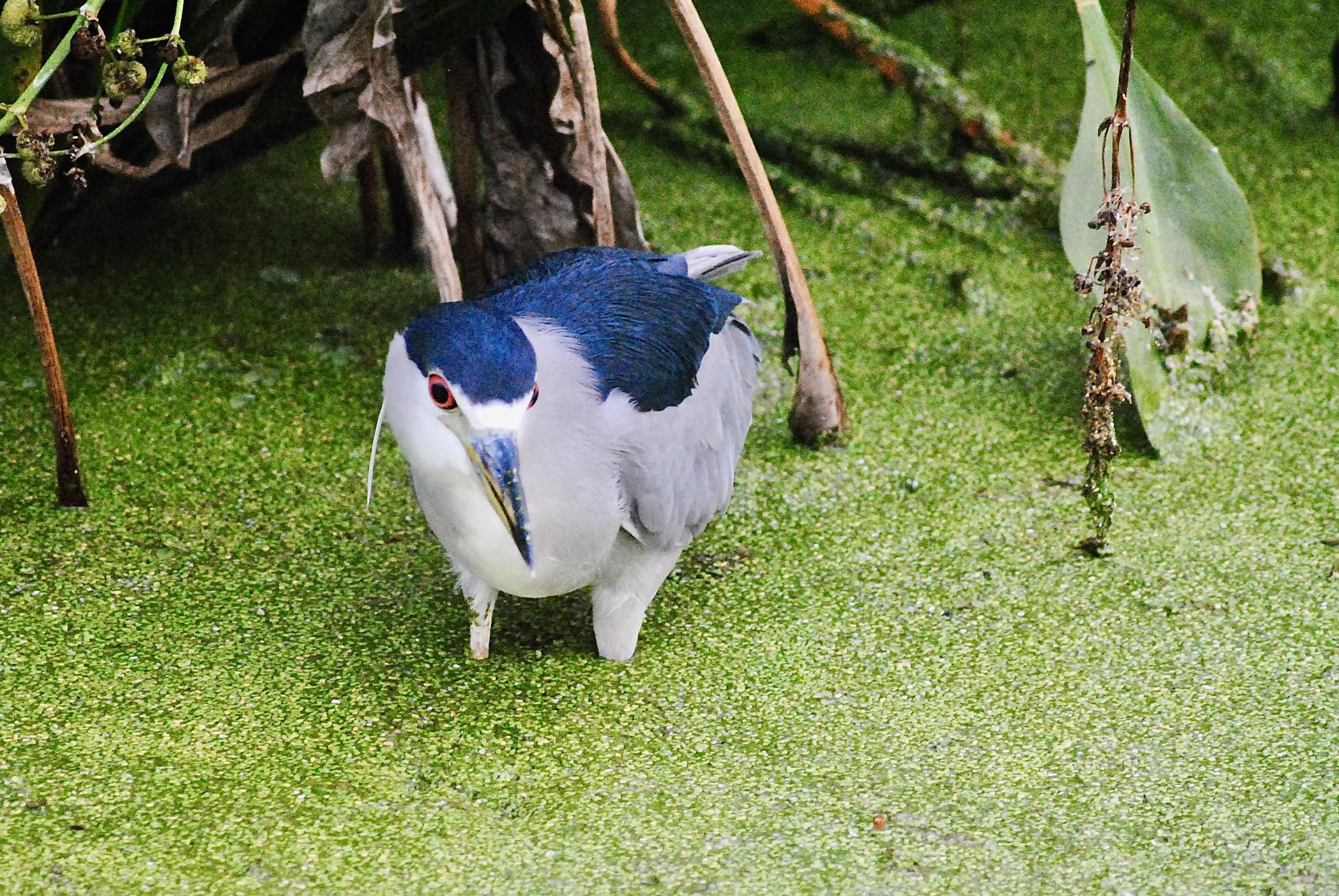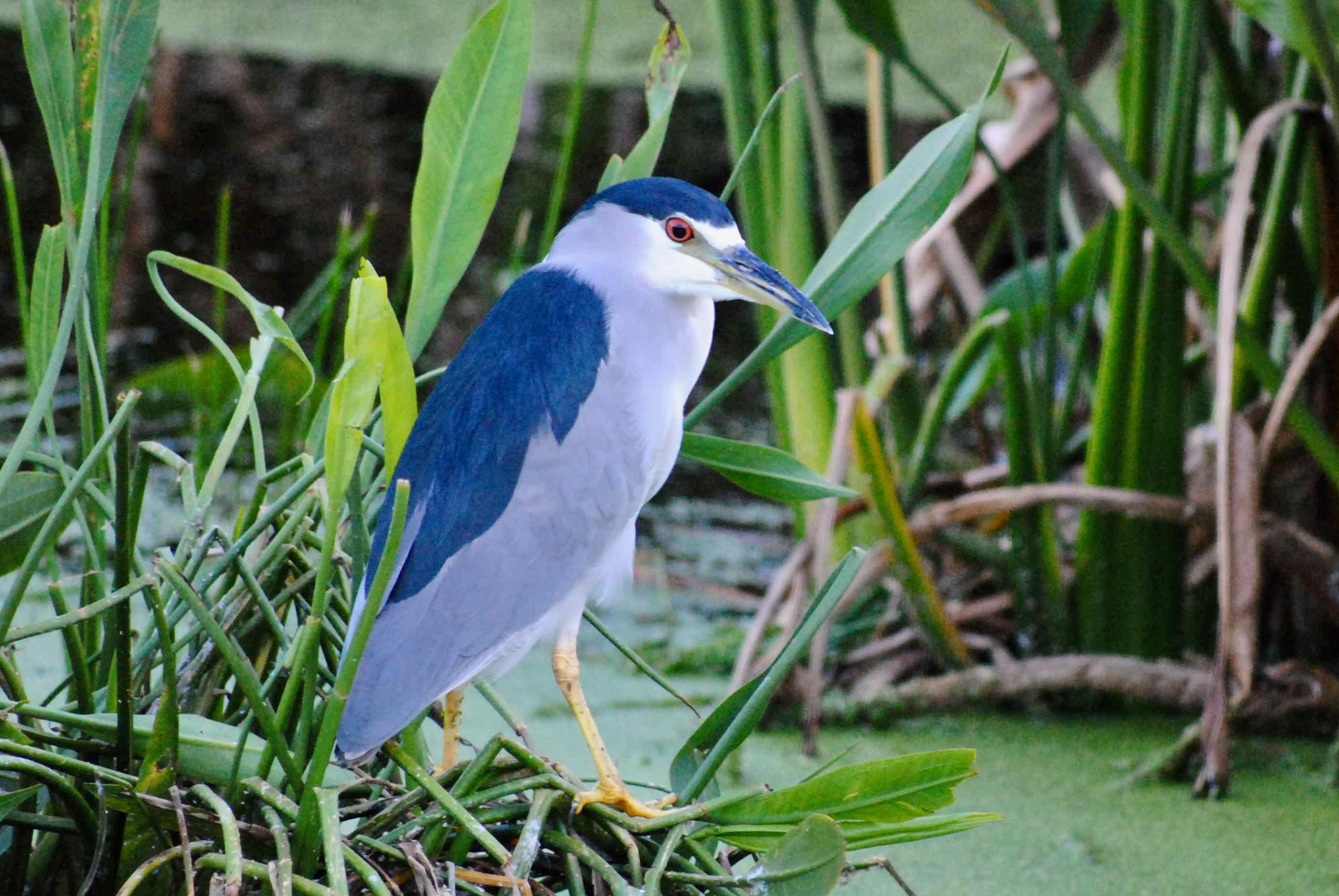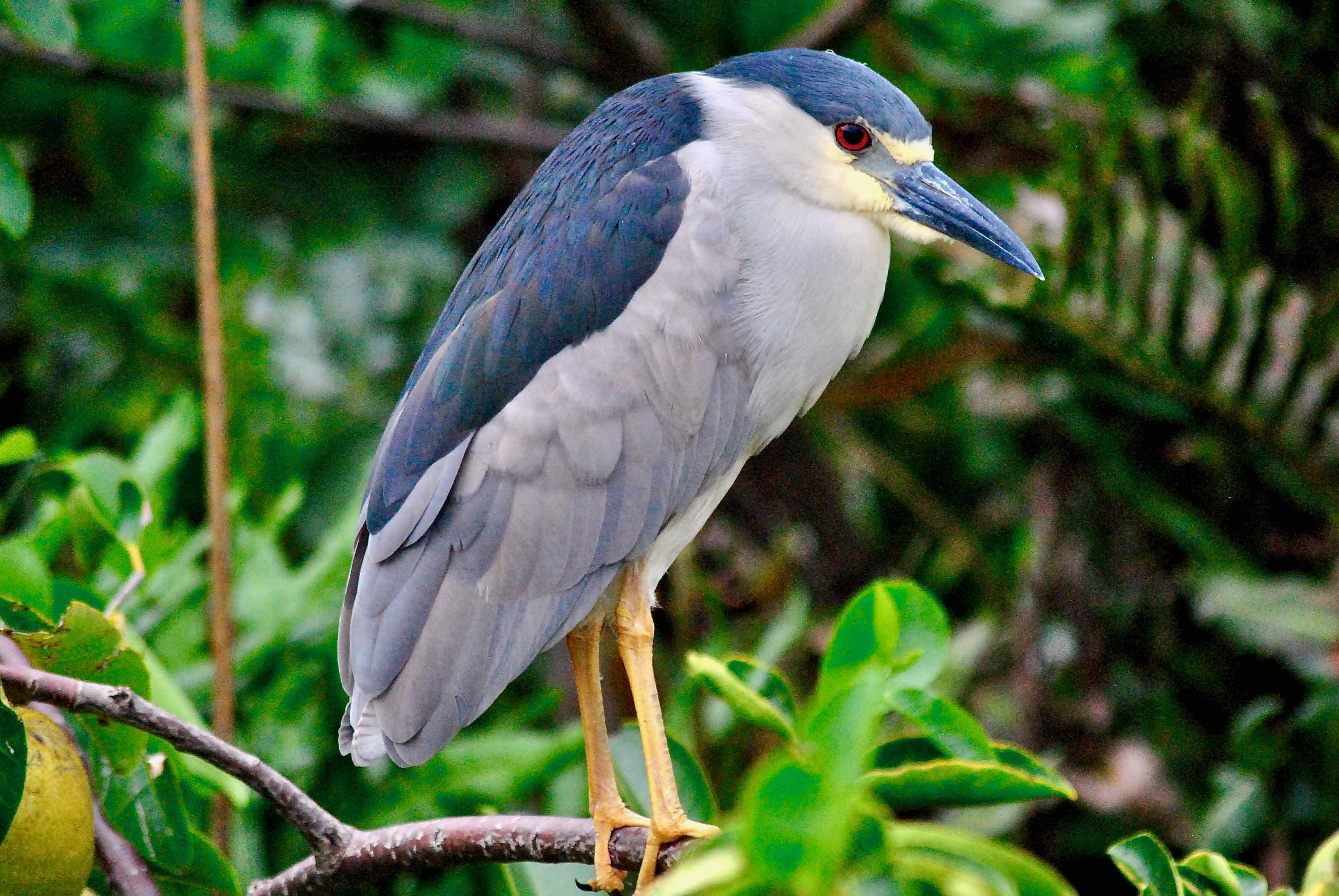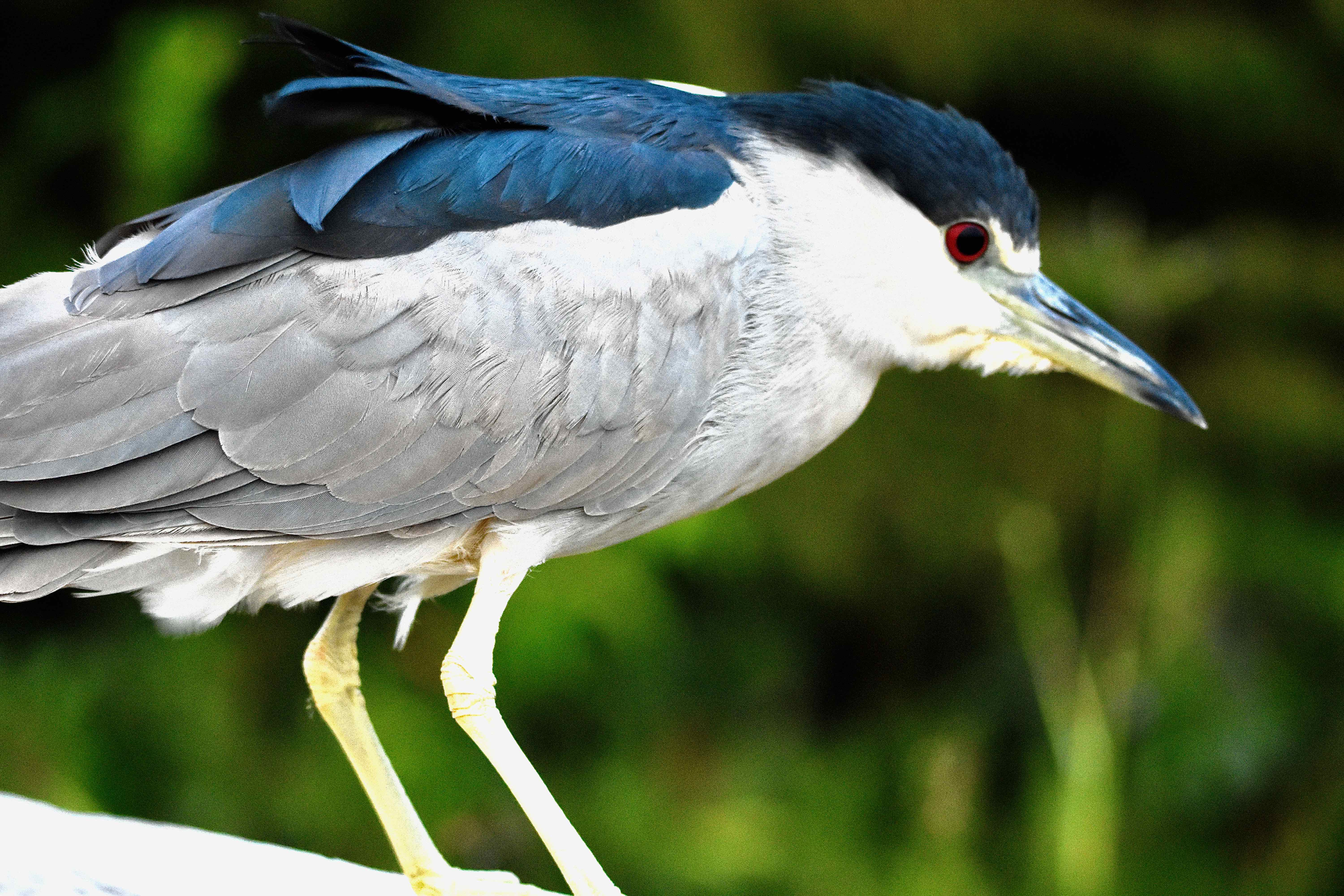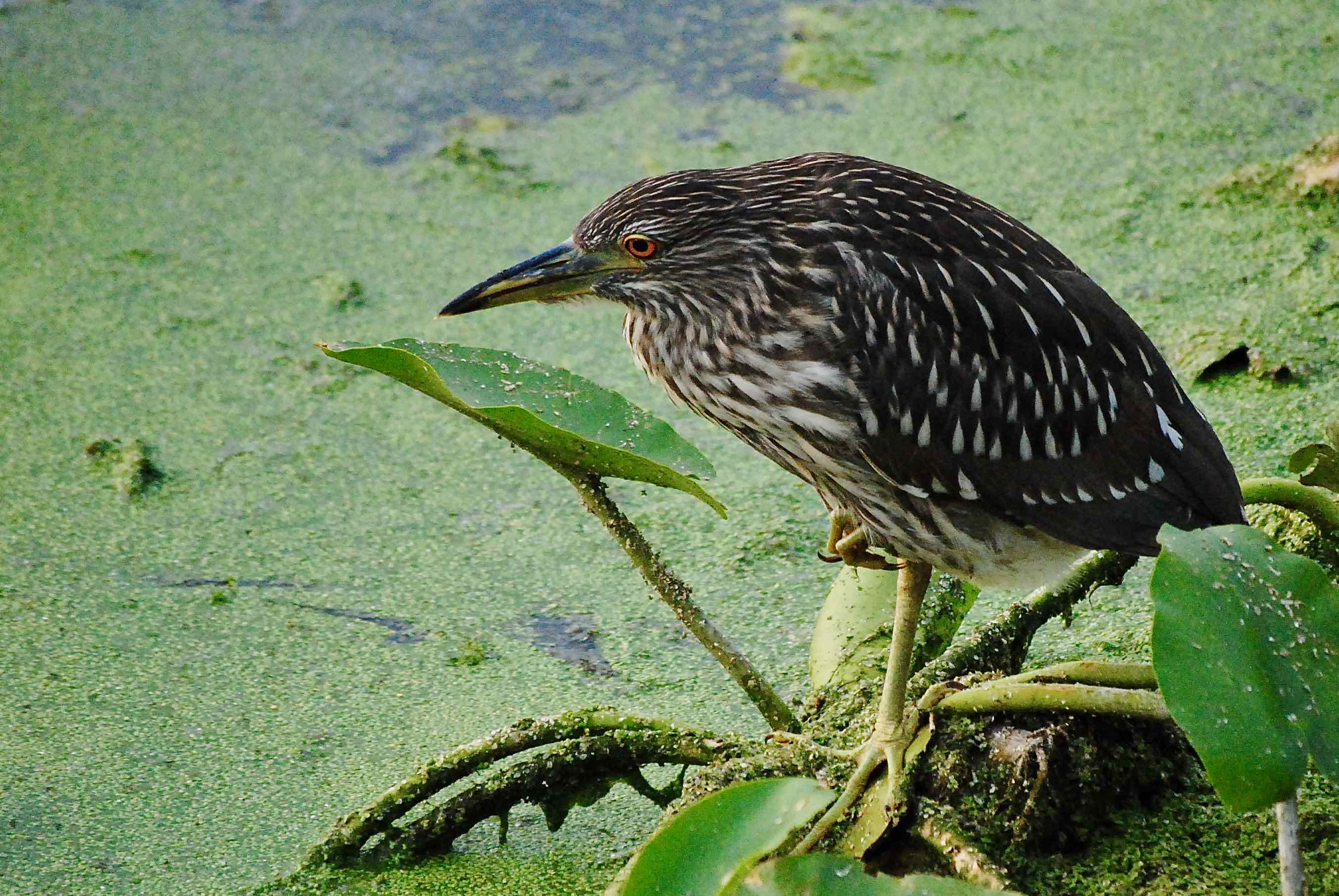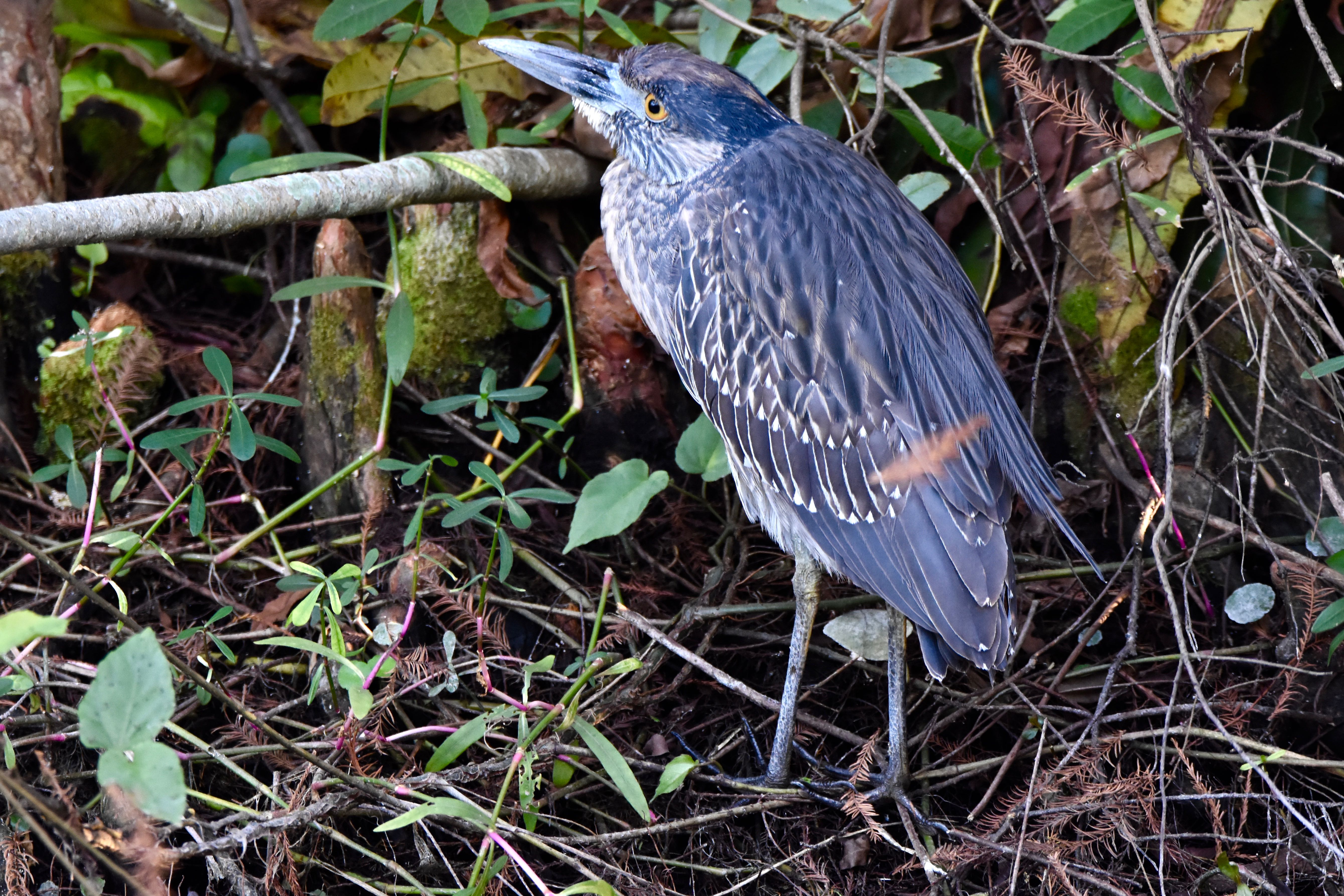
Black-crowned night heron, photographed at Green Cay Nature Center, Boynton Beach, Palm Beach County, in December 2017.
One of our favorite birds. As the name implies, the black-crowned night heron, Nycticorax nycticorax, is among the late risers of the avian world. If the early bird is truly the one that gets the worm, then the night heron would be in trouble.
Toward evening, the black-crowned night heron leaves its roost to begin foraging, and continues to hunt until first light. The night-owl lifestyle allows it to find food at a time of day when there's little competition. On the menu: fish, shrimp, mussels, leaches, rodents, snakes, frogs, bird, eggs, carrion and garbage. Garbage.
The black-crowned is the most widespread heron in the world, with a range that spans five continents. In the western hemisphere, it can be found in the northern extremes of Canada to Cape Horn in South America. In places, it's a migratory bird; in others, including South Florida, it's a year-round resident. Migratory black-crowneds significantly boost Florida's population in the cooler months. Black-crowns are common seen in and near wetlands and open water, perched in trees, stalking prey in shallows and mud flats or in flight.
It’s a stocky bird, with a short neck for a heron. They go about two feet long, with a wingspan of nearly four feet. The body is grayish, blue-black on top with long, white plumes. Juveniles are brownish gray. The main photo on this page shows a night heron in the process of transforming from juvenile browns into the blues and grays of the adult. A juvenile is shown in the bottom right.
Yellow-crowned night herons are the closest in looks to the black-crowned but the top of the head is yellow-white, the face is dark and the wings are striped. The bill on the yellow-crowned is shaped differently, a little stouter, perhaps, and they tend to be more upright than their cousins.
Nesting season in Florida begins in January and runs through August, though there is some evidence that they nest year-round. Males choose a nest site, begin construction and then look for a mate. The new couple continues nest building, with males providing material and females handling assembly. Nests are stick platforms built over or near water, usually in colonies with other night herons or other wadersbirds. Females lay three to five eggs per clutch, which require three or four weeks to incubate. Both parents sit; both feed the young. At one month, the offspring can leave the nest. They can't fly, but they do join in foraging. At six or seven weeks, they fledge. Full adult colors come in their third year.
The International Union for Conservation of Nature rates the black-crowned night heron as of least concern, but other groups have seen a slight decline in the bird's population. Loss of habitat and decline in habitat quality are threats.
Black-crowned night herons are members of Ardeidae, the heron family.
Green Cay Nature Center

